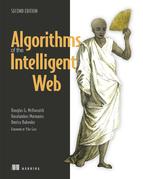List of Figures
Chapter 1. Building applications for the intelligent web
Figure 1.3. The intelligent-algorithm lifecycle
Chapter 2. Extracting structure from data: clustering and transforming your data
Chapter 3. Recommending relevant content
Figure 3.2. Naïve similarity curves as functions of the Euclidean distance
Chapter 4. Classification: placing things where they belong
Figure 4.2. An overview of classification algorithms based on their design
Figure 4.3. The lifecycle of a classifier: training, validation (or testing), and use in production
Chapter 5. Case study: click prediction for online advertising
Chapter 6. Deep learning and neural networks
Chapter 7. Making the right choice
Appendix Capturing data on the web
..................Content has been hidden....................
You can't read the all page of ebook, please click here login for view all page.
